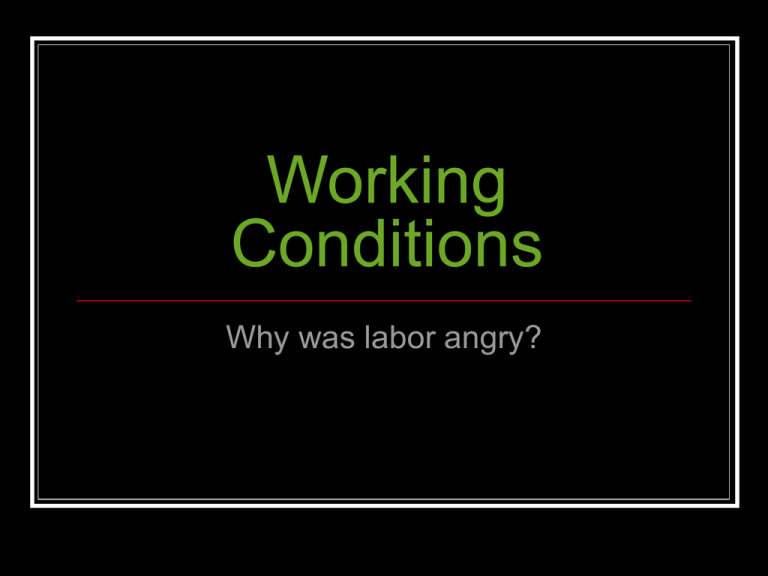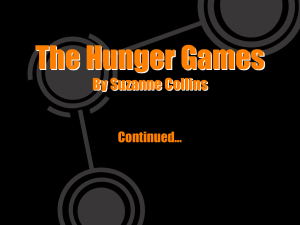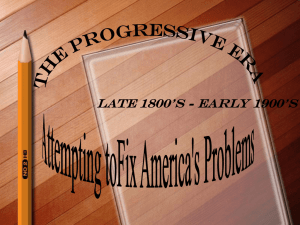Working Conditions - Jamestown School District
advertisement

Working Conditions Why was labor angry? Corporations - you, too, can own a company! Corporations Companies that are publicly owned Sell stock to raise funds to grow business Stock prices are determined supply and demand Stock is sold on a stock market (New York Stock Exchange is on Wall Street in NYC) Share - One part of the business. Shareholders - people who own at least one share of stock QuickTime™ and a decompressor are needed to see this picture. QuickTime™ and a decompressor are needed to see this picture. QuickTime™ and a decompressor are needed to see this picture. Corporations vs. Private companies Must tell public (potential shareholders) about profits/losses Controlled by a elected board of directors (shareholders vote) Can raise $ quickly Owners do not have to tell profits/losses Owners have more control Harder to raise capital (funds) for new machines, factories QuickTime™ and a decompressor are needed to see this picture. Working Conditions in late 1800s As mass production increased, companies get bigger, less personal. Workers can be fired any time for any reason Factories were uncomfortable, unsafe, dark, and dirty Hours varied from 10 to 14 hours a day, 6 days/week Injuries - if you were hurt, you were fired. No insurance. Sweatshops - crowded and dangerous, usually refers to textile/garment industry QuickTime™ and a decompressor are needed to see this picture. QuickTime™ and a decompressor are needed to see this picture. Workplace Safety 1900 - 35,000 people died in industrial accidents 500,000 people were injured in the same year Most infamous incident was the Triangle Shirtwaist Factory in New York City, a clothing sweatshop that started on fire Women and Children in the Labor Force Women paid half as much as men Child Labor Hundreds of thousands under 16 working Some states ban laborers under 12, but these laws were ignored Kids work on machines designed for adults Kids have almost no power to stand up for better pay, conditions QuickTime™ and a decompressor are needed to see this picture. QuickTime™ and a decompressor are needed to see this picture. Triangle Shirtwaist Fire Progressives Attack Workplace Reform Triangle Shirtwaist Fire (1911) Fire breaks out in NYC garment shop Most workers are female Jewish immigrants 146 die in fire, some by jumping out of upper story windows Lower windows were barred and doors were locked to prevent workers from leaving early How It Began Doors were locked Windows on first and second floors were barred No breaks, no fresh air Spark lit lint in the air on fire, and it spread rapidly People could not escape, and the workers, mostly women, jumped out of upper windows to the streets below 146 workers perished in the fire Police could only stand by and watch - doors were locked! QuickTime™ and a decompressor are needed to see this picture. QuickTime™ and a decompressor are needed to see this picture. Fire escapes melted due to the intense heat and were useless “And there was this beautiful little girl, my friend, Dora. I remember her face before she jumped.” Bessie Cohen - Worker Triangle Shirtwaist fire Made National News People began to look at reforms in the workplace Unions Protest Deaths of Their Fellow Workers Unfortunately we had to have a horrible incident to get things moving When else has this happened? Triangle Shirtwaist Fire Website http://www.ilr.cornell.edu/trianglefire/











